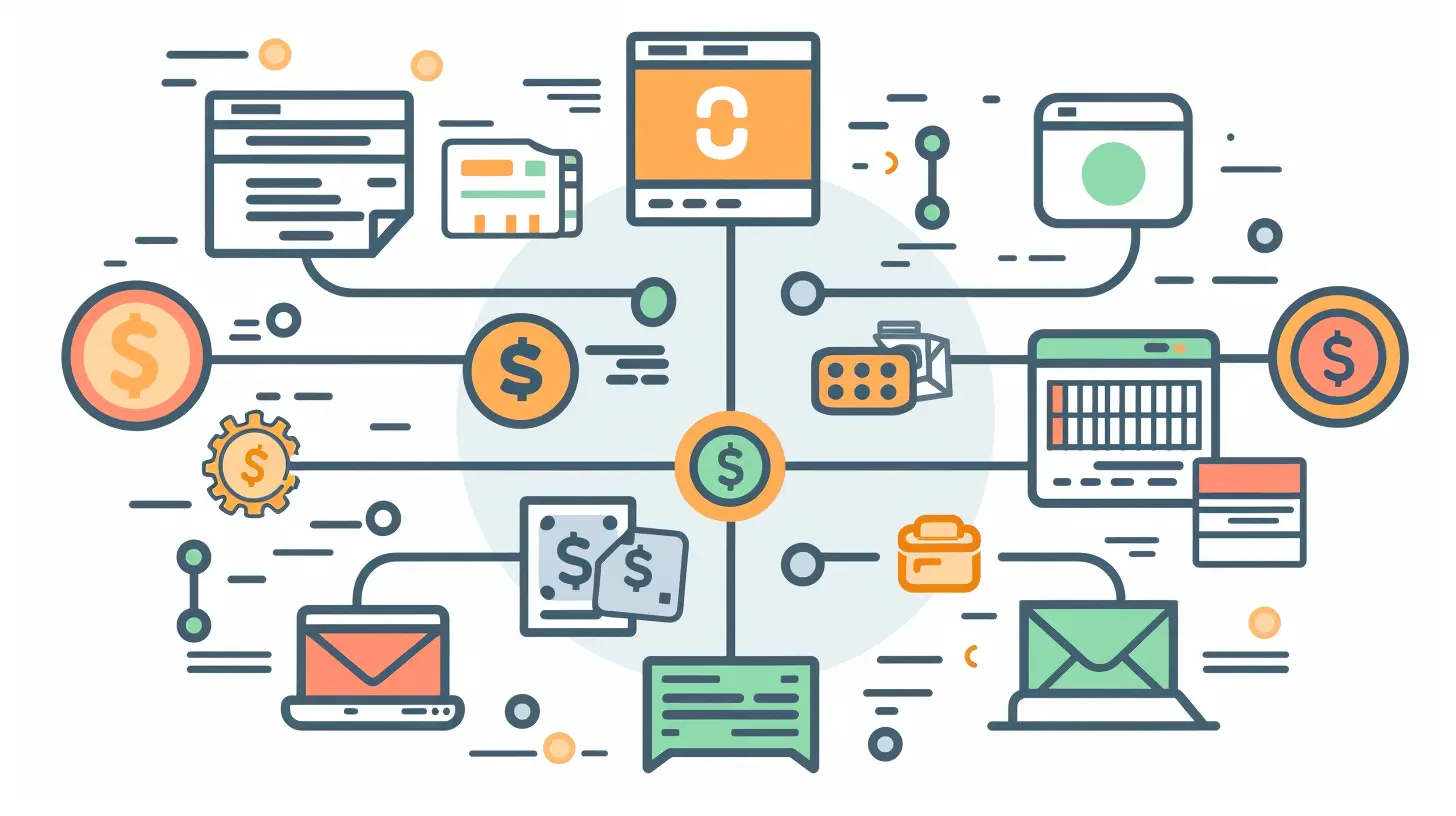Cash Flow vs Profit: Why Every Business Owner Should Know the Difference
6 July 2025
If there’s one thing that can trip up even the most seasoned business owner, it’s confusing cash flow with profit. Let’s be honest—on the surface, they sound like the same thing, right? Money’s coming in, money’s going out. What’s the big deal?
Well, let me tell you something: mixing up cash flow and profit is like mistaking a roadmap for the actual road. They’re connected, but they’re definitely not interchangeable. Understanding the difference could mean the difference between a thriving business and one that’s constantly putting out fires.
Sit tight, grab a coffee (or tea, if that’s your thing), and let’s break it down. By the end of this, you’ll see why every entrepreneur needs to master the nuances of cash flow and profit—before they come back to bite you. 
What Is Cash Flow?
Think of cash flow as the lifeblood of your business. It’s the actual flow of money moving in and out of your company.Let’s say you own a bakery. When a customer buys a $5 croissant and hands you the cash, that’s income coming in. Now, when you pay $2 to your flour supplier or $1 to the electric company, that’s cash exiting your business. Cash flow keeps the lights on, pays your employees, and makes sure you’ve got enough dough (pun intended!) to keep things running smoothly.
There are two key components here:
1. Positive Cash Flow: More money is coming in than going out. Sweet!
2. Negative Cash Flow: You’re bleeding more cash than you’re making. Not what you want.
Sounds simple, right? But here’s where people get tripped up: just because your cash flow is in the green doesn’t necessarily mean your business is profitable. Let’s get into why. 
What Is Profit?
If cash flow is the lifeblood, profit is the ultimate goal of any business. It’s the money left over after you’ve covered all your expenses.Using our bakery example again, say you made $10,000 in sales this month. Subtract $5,000 for ingredients, $2,000 for rent, and $1,500 for staff salaries. That leaves you with $1,500. That’s your profit.
There are two main types of profit you need to know about:
- Gross Profit: This is your total revenue minus the direct costs of producing your goods or services. For example, after taking out only the cost of your flour, butter, and sugar, you’re left with your gross profit.
- Net Profit: This is what’s left after every single expense, from rent to utilities to taxes. Think of net profit as the purest representation of your bottom line.
It’s this net profit that tells you if your business is truly profitable. If you’re not turning a profit, it doesn’t matter how much cash you have on hand—you’re in trouble. 
The Key Difference Between Cash Flow and Profit
Alright, here’s where the rubber meets the road. So what’s the actual difference between the two? Well, cash flow is all about timing. It’s tracking the movement of money in real-time. Profit, on the other hand, is more of a long-term measurement that shows whether or not your business is sustainable.Here’s an example to make it stick:
Imagine you run a landscaping business. You just landed a $10,000 contract for a big job. But there’s a catch—the client won’t pay you until the job is done, which could take three months.
In the meantime, you’ve got to shell out $3,000 for equipment and materials, plus another $2,000 for labor. That’s $5,000 going out right now, with no money coming in for weeks or months.
In this scenario, your profit might look great on paper (you’re netting $5,000 once the job’s paid!), but your cash flow is a disaster. If you can’t cover those upfront costs, your business could grind to a halt before you even get paid. 
Why It’s Dangerous to Confuse the Two
So, why does it matter? Can’t you just wing it and hope everything balances out? Sorry to burst your bubble, but no.Confusing cash flow and profit is like mistaking a short-term win for long-term success. You might see a pile of cash in your bank account one day and think, “Hey, we’re killing it!” But then a sudden expense hits, and you’re scrambling to make payroll.
Here’s the brutal truth: plenty of profitable businesses have gone under due to cash flow problems. You can’t pay bills with “profit.” Vendors and creditors want cash, and they want it now.
Cash Flow and Profit in the Real World
Enough theory. Let’s look at how understanding these concepts can make or break your business.1. Scaling Without Going Broke
You might think, “We’re profitable, so let’s expand!” But can your cash flow handle it? For example, hiring new staff or opening a second location requires upfront investment. If you’re not careful, your cash flow could dry up before your expansion even starts paying off.2. Handling Unexpected Expenses
Life throws curveballs, and so does business. Whether it’s a broken piece of equipment or a sudden dip in sales, having strong cash flow ensures you can handle surprises without derailing your operations.3. Winning Over Investors and Lenders
If you’re looking for funding, both cash flow and profit matter. Investors and banks want to see not only that your business is profitable but also that you’ve got a healthy cash flow to pay back loans or deliver returns.How to Manage Both Effectively
Alright, now that we know the stakes, let’s talk about what you can actually do to stay on top of cash flow and profit.1. Track, Track, Track
First things first: if you’re not tracking your finances, you’re flying blind. Use accounting software like QuickBooks or Xero to monitor your cash flow and profit.2. Create a Cash Flow Forecast
This is like a crystal ball for your business. It helps you predict when cash will come in and go out, so you’re not caught off guard by big expenses or seasonal slowdowns.3. Speed Up Receivables
Waiting for clients to pay you? Speed things up by offering discounts for early payments or sending invoices more frequently.4. Delay Payables (Strategically)
Negotiate longer payment terms with your suppliers, but don’t overdo it. You don’t want to damage relationships or rack up late fees.5. Cut Unnecessary Costs
If you’re struggling with cash flow, look for non-essential expenses to trim. Do you really need that fancy office coffee machine, or can you make do with a regular one for now?6. Build a Cash Reserve
Think of this as your emergency fund. Aim to stash away enough cash to cover at least three to six months of expenses.The Bottom Line: A Balancing Act
At the end of the day, cash flow and profit are two sides of the same coin. You need both to run a successful business, but understanding their differences is what sets savvy entrepreneurs apart from those who are just winging it.It’s like managing your personal finances: you could have a high-paying job (profit), but if you’re living paycheck to paycheck with no savings (cash flow), you’re one unexpected expense away from disaster.
So, the next time you’re tempted to celebrate a big sale or freak out over a slow month, take a step back. Look at both your cash flow and profit. They’ll tell you the full story of your business’s health—and help you make smarter decisions moving forward.
all images in this post were generated using AI tools
Category:
Cash FlowAuthor:

Baylor McFarlin
Discussion
rate this article
2 comments
Mila McGuffey
Understanding this difference is essential for success.
November 21, 2025 at 4:53 AM
Zacharias McElroy
Understanding the cash flow versus profit dynamic is crucial for business survival. While profit tells you what you’ve earned, cash flow reveals what you can spend. Ignoring this difference could turn your profitable venture into a cash-strapped nightmare. Choose wisely!
July 17, 2025 at 11:31 AM

Baylor McFarlin
Absolutely! Cash flow management is vital; it ensures that profitability translates into actual financial health. Thanks for highlighting this key distinction!


